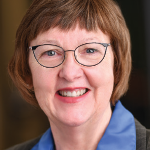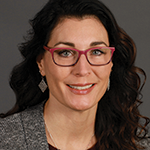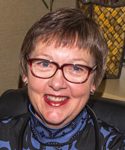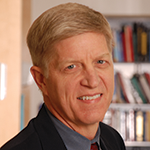
TeddyandMia / shutterstock.com
A relatively new state association, the Rheumatology Association of Minnesota and the Dakotas (RA-MD), held its first meeting in 2016. Five years later, the association president, Jody Hargrove, MD, a board-certified rheumatologist with Arthritis and Rheumatology Consultants PA, Edina, Minn., says the group’s membership fluctuates between 80 and 100 rheumatology professionals.
RA-MD has members from Minnesota, South Dakota and North Dakota, and the organization’s board has representation from all three states. Interest in forming a state association in Minnesota began a number of years ago, and during the process, Dr. Hargrove says it made sense to combine membership in the three states because the Dakotas have a limited number of rheumatologists.
“As a group, we regularly communicate on issues through email and the board members have phone meetings twice a year, or more often as needed,” Dr. Hargrove said. “We have our annual in-person meeting in the fall, and it’s open to all rheumatologists, as well as nurse practitioners, physician assistants, researchers and practice managers who work with rheumatology patients or work to advance the care of rheumatic disease.”

Dr. Hargrove
Although the association’s 2020 conference was canceled due to the pandemic, Dr. Hargrove says its 2021 annual meeting is scheduled for Oct. 2 at the Sheraton Bloomington Hotel, Minnesota
Dr. Hargrove says RA-MD often teams with a statewide coalition of healthcare nonprofits, such as the Arthritis Foundation Minnesota, to address legislative issues, such as HF 3196, a statewide bill that provides patient protection and prevents the insurance industry practice known as step therapy.
“The passage of the bill, which went into effect in 2019, allows our rheumatologists to decide the best medication and treatment plan for their patients, rather than having it determined by insurers who often base their decision on what drugs they can get the best price on,” Dr. Hargrove says.
The COVID-19 pandemic did not stop advocacy efforts, but did limit their scope and expansion a bit. Dr. Hargrove hopes to have a more active advocacy committee in place soon.
Addressing Access Issues
Another concern for RA-MD highlighted during the pandemic is the availability of conveniently accessible rheumatology providers in the large geographic area encompassed by the three states.
‘During the winter, weather conditions often make it impossible for patients to safely navigate the roads in order to make it to an appointment.’ —Dr. Petersen
“We have patients who live 350 miles from the nearest rheumatology provider, and we’re only able to see them once or twice a year,” Dr. Hargrove says. “Rheumatologists in the Twin Cities area have really ramped up telehealth efforts and made virtual appointments an option for patients during the pandemic. Continued judicious use of telehealth visits should partially alleviate these geographic barriers to care.”
According to the Arthritis Foundation, 819,000 Minnesotans live with arthritis.¹ In South Dakota, the state’s Department of Health reports that 24% of adults in the state report having a rheumatic disease (i.e., some form of arthritis, rheumatoid arthritis, gout, lupus or fibromyalgia).²
 Kara Petersen, MD, a rheumatologist with Avera Health in Sioux Falls, S.D., has served as secretary for RA-MD for the past two years.
Kara Petersen, MD, a rheumatologist with Avera Health in Sioux Falls, S.D., has served as secretary for RA-MD for the past two years.
Just like her colleagues in Minnesota, Dr. Petersen says access to specialty care is a big concern in the Dakotas.
“I have patients who drive one to two hours for an appointment and even some who have to make a six-hour trek,” she says. “During the winter, weather conditions often make it impossible for patients to safely navigate the roads in order to make it to an appointment.”
Dr. Petersen, who is booked three months out for appointments, says conducting telehealth visits with patients during the pandemic benefited many patients in rural areas and she hopes insurers will continue to fund virtual appointments.
“The downside to telehealth visits is not being able to conduct a physical examination on patients,” Dr. Petersen says. “The advantages are we can help patients to stabilize their disease, ensure they stay on their medications, answer any questions they may have and offer reassurance.”
Addressing the Physician Shortage
Like many states across the country, Dr. Hargrove says Minnesota and the Dakotas will most likely experience a shortage of rheumatology providers over the next 10 years. Dr. Hargrove says factors affecting this are the retirement of many baby boomer-age rheumatologists, the shift to more women providers who more often work part time and the larger number of millennial providers who tend to see fewer patients in the quest for a better work-life balance.
Treating younger patients is also a concern. North Dakota only has two pediatric rheumatologists, and South Dakota has one who splits time between Sioux Falls and Fargo.
Dr. Petersen says RA-MD has a good representation of physician assistants and nurse practitioners and sees them helping to alleviate the shortage of rheumatologists, especially in rural areas.
“These mid-level providers definitely help to increase patient access,” Dr. Petersen says. “As rheumatology professionals, we’re spread out across the three states,” she says. “Our meetings give us a chance to come together and talk about issues that are unique to the upper Midwest.”
The Next Gen
Two Minnesota institutions, the University of Minnesota, and the Mayo Clinic, Rochester, offer rheumatology fellowship training programs.
“Keeping these training positions full and possibly expanding the number of positions, along with recruiting more nurse practitioners and physician assistants into rheumatology, will be critical for meeting the future demand for care,” Dr. Hargrove says. “Retaining newly trained rheumatologists to provide care in the tri-state area is also a critical factor in meeting demand.”
Although there isn’t a similar program in South Dakota, Dr. Petersen who also works as a clinical professor in the Department of Internal Medicine at the Sanford School of Medicine, says several of the residents she’s worked with have decided to pursue a career in rheumatology.
“Several former students, including two of the partners at my practice, opted to come back to South Dakota after finishing their fellowships in other states,” Dr. Petersen says. “It’s gratifying to see rheumatologists return to South Dakota.”
Linda Childers is a health writer located in the San Francisco Bay Area.
References
- Arthritis Foundation Minnesota.
- Arthritis. South Dakota Department of Health website.


